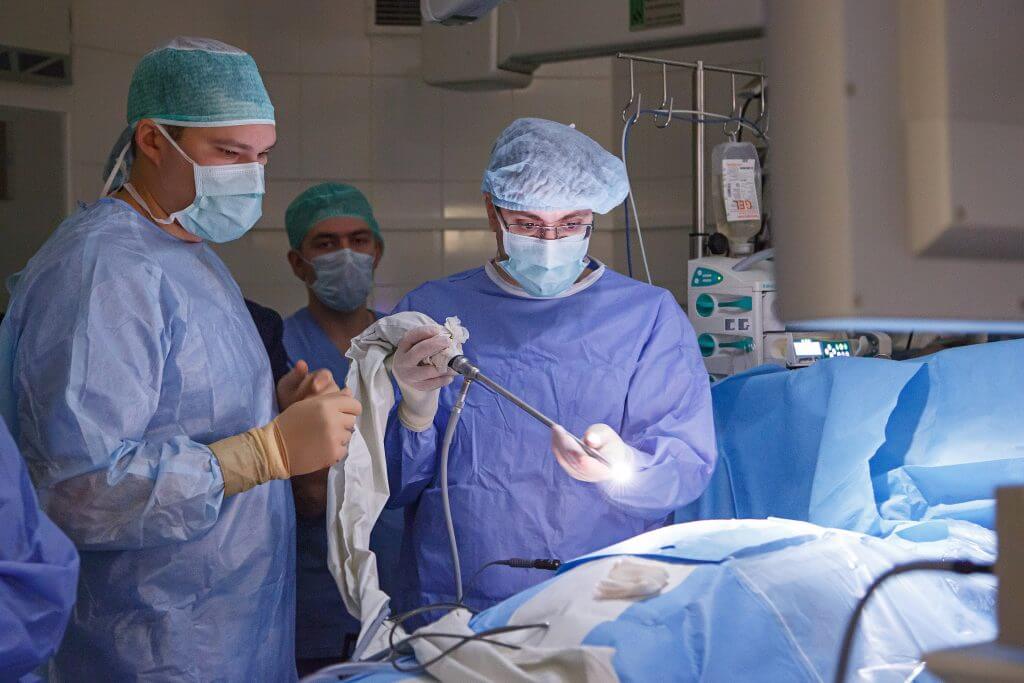Treatment of atrial fibrillation
Author Ольга Кияница
2017-11-10
Atrial fibrillation (AF) most often develops in the context of acute and chronic heart failure. Its occurrence considerably complicates hemodynamics and reduces the prognosis to the unfavorable. The dependence of the frequency of development of fibrillation and the increase of the functional class of heart failure is noted. The higher the latter, the greater the risk of developing AF (with II FC risk is 10%, with IV FC - almost 40%).
The presence of cardiovascular pathology increases the likelihood of atrial fibrillation. If the clinically healthy incidence is 1.6%, then in the presence of heart and vascular diseases, it rises to 9.1%.
Burning attacks is important in helping the patient first. Also, for many years, the experience of treating the atrial fibrillation of the heart was going to take place. Today, in practice, different strategies and techniques for AF therapy, which combines both with chronic heart failure and other diseases of the cardiovascular system, are used in practice.
Video Fibrillation of the Atrium: Causes, Treatment
Emergency aid for atrial fibrillation
The attack is manifested by symptoms such as dizziness, severe weakness, marked interruptions in cardiac activity, anemic condition. At the pre-medical stage, until the ambulance brigade has arrived, it is necessary to carry out the following actions to assist the patient:
- It is necessary to put on a flat surface and to release a neck (to unbutton a collar or to remove a scarf).
- In the presence of such drugs as valocardin, valerian, corvalol it should be given one of them to the patient.
- With a rapid heartbeat, it is necessary to apply to the forehead a dampened towel in cold water, to give a drink of cool water.
- At fainting, one needs to try to lead to a feeling, for which it is necessary to pat the cheeks or near the nose to hold a sharply smelling liquid (ammonia alcohol).

It is important, at the first minute of the onset of the attack, to seek emergency medical help because it is very important to start intravenous heart medications and preparations for the treatment of atrial fibrillation as soon as possible. Of great importance is thrombolytic therapy, which prevents the development of stroke.
Upon arrival of the medical brigade, health workers are informed in detail about the actions taken. Next, emergency medical assistance starts with the use of medicines and tools.
- The attack lasted no more than 24 hours - good effect is given by novocainamide, which helps in 90%. It is injected intravenously.
- Paroxysm lasted no more than two days - amiodarone is injected into glucose drip, for 20-120 minutes. If there is no improvement over the specified time, then propafenone, which in some cases is replaced by novocainamide, is used.
- The course of the attack for more than two days is not stopped at the stage of ambulance, because in this case the risk of developing thromboembolism is increased. Therefore, the patient is taken to the hospital for complex therapy.
Medicinal treatment of atrial fibrillation
All patients with atrial fibrillation, especially from the first occurrence, are hospitalized in a medical facility. After general analyzes and diagnostics of an organism the treatment is given taking into account indications.
- Most often, the treatment of atrial fibrillation in a hospital setting begins with the introduction of digoxin (cardiac glycoside). This medication well reduces an attack in 2/3 cases.
- The use of novocainamide within half an hour after the introduction of digoxin significantly increases the effect of the latter. Unique, novocainamide gives a number of side effects (nausea, vomiting, headache, loss of appetite, insomnia, hallucinations).
Drugs can be administered only in hospital conditions, since ECG monitoring is required. Misuse of these substances can lead to a sharp decrease in blood pressure and heart rate, which can lead to cardiac arrest.
- In some cases, spontaneous cessation of short-term paroxysms is observed. Most often, this happens due to excessive excitability of the patient, therefore in such cases it is recommended to take sedative agents or anaprilin pill under the tongue.
- Attack of arrhythmias against the background of alcoholic-toxic origin is treated with the help of potassium chloride, which has a high antiarrhythmic effect. Frequent tachycardia is excreted by digoxin; if necessary, the treatment is supplemented with tabulated obesidan or anaprilinum.
- Paroxysm in elderly people who have organic heart and vascular diseases is first treated with a slow introduction of strophanthina. If there is no contraindication (digitalis intoxication), digoxin is used. The absence of a result after administration in half an hour is an indication of the use of novocaineamide. If the remedy also has no effect, then electropulse therapy is applied.
Patients with a permanent form of atrial fibrillation are hospitalized only in those cases where the refractory period of the atrioventricular node decreases or the heart rate increases. In such cases, trimer therapy, including cardiac glycosides, potassium chloride, isoptin, is used.
Treatment of atrial fibrillation in pregnant women
AF is associated with various diseases of the heart - defects (congenital and acquired), myocarditis, disorders of the coronary circulation. If the background of these diseases develops pregnancy, a high probability of development of atrial fibrillation. In the event of this pathology, the patient is treated in accordance with the recommendations of the European Society of Cardiologists from 2010, as well as a later revision, for example, in 2014 and 2016.

During treatment of AF, anticoagulant therapy is important. Pregnant women with this pathology are obliged to do so.The only preparations that dilute blood, should be taken with caution in the first trimester and a month before the estimated date of birth. In these times it is better to use heparin.
New oral anticoagulants (rivaroxaban, dabigatran, apixaban) should not be used in the treatment of pregnant women.Also, these drugs should not be prescribed at the stage of pregnancy planning.
Surgical treatment of atrial fibrillation
Pharmacological treatment of AF in some cases does not prove to be effective enough, which directs treatment to a more radical course.
Non-pharmacological methods for controlling heart rate include the following types of surgical intervention:
- Radio frequency ablation. It is based on the introduction through the femoral vein of the catheter, which is modified by the atrioventricular compound.

- Operation "labyrinth". Helps to restore sinus rhythm in 85% of cases. It enters into a surgical intervention on the atrium tissue in order to reduce the mass of the heart muscle involved in the formation of an ectopic focus on the mechanism of re-entry.
- Implantation of the atrial defibrillator cardioverter. They have high specificity (almost 100%) and recognition (up to 92%) of paroxysmal AF attacks. The devices effectively stop the development of attacks, but are suitable only for those patients who have rare paroxysms.
In some cases, electrocardiogram is indicated. Often it is used for stable and paroxysmal atrial fibrillation. Also, the EKS is used after open heart surgery in order to reduce the risk of re-occurrence of arrhythmia.
Treatment of atrial fibrillation by folk remedies
During pharmacotherapy of AF, especially in case of infrequent manifestations, it is recommended to apply phytotherapy additionally. In the box of folk recipes collected many plants that can cope with arrhythmias and other cardiovascular diseases. The following folk instruments are most commonly used:
- Berries of Kalina are rich in substances useful for heart, therefore its application allows to improve the well-being of patients with atrial fibrillation. From the dried fruit make a decoction, they are taken in the amount of one glass and poured the same amount of hot water. Then on a medium heat a little boil and after cooling, they are taken three times a day in equal portions.

- Hawthorn berries are valuable fruits for the heart and blood vessels, therefore they are made from tinctures that are taken before eating with a small amount of water for 20-30 drops.
- Dill seeds are rich in those components that are necessary for the heart. To make broth, take ⅓ seeds and pour a glass of boiling water, after which they are wrapped to insert. Take equal parts three times daily before meals.
Video Facts about the heart. Atrial fibrillation
Despite the risk of atrial fibrillation with proper treatment, the prognosis for the disease is favorable. The main thing is not to despair and after medical consultation to carry out the prescribed recommendations with a belief in their success.
Similar articles

A very rapid and random disorder of the atrium, which is observed to reduce them more than 300 times per minute. Pathology is extremely dangerous to human life and requires the urgent intervention of medical personnel. The risk of developing the pathology increases with age, which is contributing to organic lesions of the myocardium.
